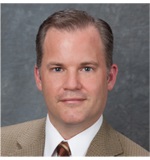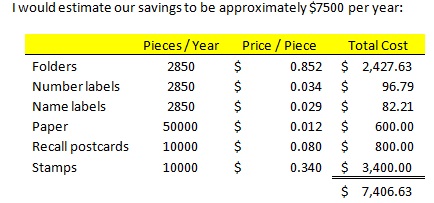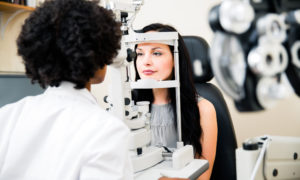By Peter J. Cass, OD
SYNOPSIS
Transitioning to a paperless practice is a win-win-win: It saves money, increases efficiency and helps the environment.
ACTION POINTS
REALIZE COST SAVINGS, MORE PATIENTS, LESS STAFF. Paperless can mean savings of over $7,000 annually, ability to see more patients and less staff needed.
MORE THAN JUST EHR NEEDED. Ancillary systems such as a electronic signature pad and electronic scanner, among other tools, are needed.
EHR NEEDS TWEAKING. Settings need to be adjusted for integration with other systems and to aid seamless eyeglass ordering, among other functions.
It is impossible to completely eliminate all paper, but we have eliminated almost all paper in my practice. At this point we only use a single sheet of paper that we call a “routing slip,” which functions like a work order and allows us to track the patient through their office visit and write brief notes about things like insurance, prescription options and follow-up scheduling. We have even gone as far as to eliminate signature forms, bills and paper claims remittance.
Other than that one sheet of paper, we generate no paper, and we don’t file any paper. In fact, after the patient’s insurance has been paid, we shred the “routing slip,” since all the information on the routing slip is already in our computer system. When we built a new office three years ago, we did not even build any shelves or cabinets for files.
Cost Savings, More Patients Seen Daily & Less Staff Needed
Paperless records have made our practice much more efficient. I personally see 40 to 50 patients per day, and would find it nearly impossible to handle that volume without an EHR. By eliminating paper products, we have realized a cost savings of over $7,000 annually.
A paperless office can also reduce the need for staffing. As we grew, we got to the point that our insurance clerk could not handle the volume of claims, but by finding a clearing house that integrated with our EHR, one insurance clerk is able to handle all of our verification, authorization, billing and posting. Without an integrated solution, I would have needed at least one more staff member. An integrated recall system also meant that we did not have to hire another staff member to handle that task as the number of recalls grew and the staff that were handling recall were able to spend more time on patient care and customer service.
Cost Efficiency of Going Paperless

Key Steps to Going Paperless
• At check in, we have an electronic signature pad to capture signatures (no printed HIPAA or ABN forms).
• Patients can complete history questionnaires online through a secure portal on our web site (we do not hand patients a stack of forms to fill out).
• We use a full EHR and record all preliminary data and exam data in the EHR.
• Any images taken during pre-testing or the exam are available electronically through our network (no printed images).
• Any tests ordered are similarly available through the network. Any image or report not capable of being viewed digitally is scanned into the patient’s file and the original document shredded.
• Contact lenses are ordered directly through our software from a vendor who is integrated with our EHR.
• Glasses are also ordered directly through our software from a vendor that is integrated with our EHR.
• We file all of our insurance directly through our EHR or directly through the payer’s web site.
• We ask for all claims payments by direct deposit.
• We ask for all claims remittance by e-mail.
• We scan in reports and correspondence from other doctors.
• Bills are passed to the party who generated the bill, and once approved, bills are e-mailed to me for secondary approval and shredded. Once I give final approval, I e-mail the bill to our accountant.
• A patient engagement system handles all of our recall electronically, and sends automatic eyewear-ready notifications and surveys.
B eaumont Family Eye Care
eaumont Family Eye Care
Beaumont, Texas
Peter J. Cass, OD
Optometry School: University of Houston College of Optometry, Class of 2000
Practice history: The practice was founded in the 1920’s, and Dr. Cass and his partner at the time purchased the practice in 2001.
Number of locations: 1
Number of doctors: 1
Number of support staff: 9
Number of comprehensive exams: 5,600 annually
Annual revenues: $1,400,000 collected
Paperless Means More than Just Using EHR
A paperless office takes more than just an EHR, although the EHR is the core of a paperless office. At our office we use:
• An electronic signature pad
• A scanner for documents and forms
• A secure online portal on our office web site
• Networked image capture devices
• Web-based claims processing
• Web sites of vendors and payers
• Direct deposit
• Electronic claims remittance
• A shredder
• Patient engagement software
EHR Settings and Functionality Needs Adjusting
A truly paperless practice will require some tweaking of the EHR system. Most of the steps were simple, but some required help from the EHR vendor or another vendor.
• We had to purchase and install a signature pad and set up and customize the forms that patients would be required to sign.
• The EHR vendor had to help us set up our secure online portal. I was able to add the link to our web site.
• We had to change some settings for our contact lens ordering and import the vendors database (very easy).
• We had to make similar changes and setup for eyeglass ordering.
• We had to change a few settings for the software to support claims submission through the internet.
• We had to link and optimize our scanner.
• The patient engagement software took some set up time with the vendor and some training.
Tweak Ancillary Systems to Go Paperless
Very few of the systems we use had to be changed to work with our EHR, mainly because we always check with our EHR vendor first to see which vendors and equipment had been tested with or integrated with our EHR. There were some minor changes that needed to be made by our contact lens vendor to work with our EHR, but the vendor was open to the changes. We had to change the settings on our scanner to work properly with our EHR, but it was quick and simple. Plus, a few of the imaging systems required additional software installed over the network, but it was part of the setup.
Train Staff for Paperless Office
Thorough staff training is key to success, and the EHR vendor should play a central role in this. ODs should not try to go paperless in a single step, but should instead move toward a paperless practice in phases. The first phase could be installing a practice management module from an EHR vendor and getting the staff used to scheduling appointments and accepting payments. The second phase could involve implementing electronic medical records.
Additional phases could include adding equipment integration, electronic ordering of frames, electronic ordering of contact lenses, electronic claims processing, a patient engagement system, signature pad and form integration and online form integration. In fact, this is the same process that I followed in my own office.
Keep Tech-Un-Savvy Patients Comfortable
We offer our online secure portal as an option to speed up the process, and while we encourage it, it is not required. Patients who are not comfortable filling out our online intake forms simply have their history taken by our staff in the pre-test room.
Since our surveys are sent electronically, the responses will naturally tend to come from a younger and more connected population, however, this is the same population that is active on social media and review sites, so it is important for us to understand and capture their impressions of our practice. Additionally, most of our survey questions focus on aspects of customer service, and we would expect that to be important to people of all ages and demographics.
Related ROB Articles
Boost Efficiency: Connect Your EHR to Your Other Software
Looking Back 15 Years at the Paperless Practice
Peter J. Cass, OD, is the owner of Beaumont Family Eye Care in Beaumont, Texas. To contact: pcassod@gmail.com



























